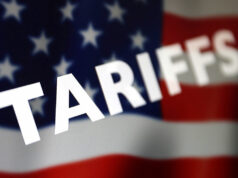July marked by ‘hot money’ net inflows — central bank
MORE FOREIGN FUNDS entered the Philippines in July compared to the preceding month, although the latest flows were a third smaller than a year ago, latest central bank data showed.
Flighty foreign investments posted a $53.29-million net inflow last month, reversing from the $516.12-million net outflow posted in June though just a fourth of the $206.47 million in July 2017.
The latest tally also ended two straight months of foreign fund outflows, according to the Bangko Sentral ng Pilipinas (BSP).
These registered foreign portfolio investments are often called “hot money,” as these funds enter and leave the country with ease.
Foreign investors put in $959.44 million in July, 5.3% more than the $910.78 million in June but down by a third from the $1.434 billion a year ago.
These inflows were partly offset by $906.15 million that were taken out, marking the smallest outflows since January 2017.
“This may be attributed to investors’ anticipation of good… corporate earnings results,” the BSP said in a statement to explain the month-on-month improvement in hot money flows.
Bulk of July investments went to shares listed on the Philippine Stock Exchange, particularly banks; property companies; holding firms, food, beverage and tobacco firms, as well as small and medium enterprises, the central bank said.
These investments yielded $51 million in net inflows.
On the other hand, placements in peso-denominated debt papers yielded $11 million in net inflows, while flows involving peso-denominated government securities resulted in $9-million net outflows.
The United States, United Kingdom, Hong Kong, Singapore and Luxembourg where the top sources of investments, accounting for 84.8% of the total.
About 78.7% of outbound funds went to the US, considered a safe haven amid current global uncertainties.
July inflows brought seven-month hot money to a $455.75-million net inflow, reversing from the $204.24-million net outflows a year ago.
The BSP expects hot money to show a $900-million net outflow by yearend, which would be bigger than 2017’s $205.03-billion net outflow. — Melissa Luz T. Lopez



